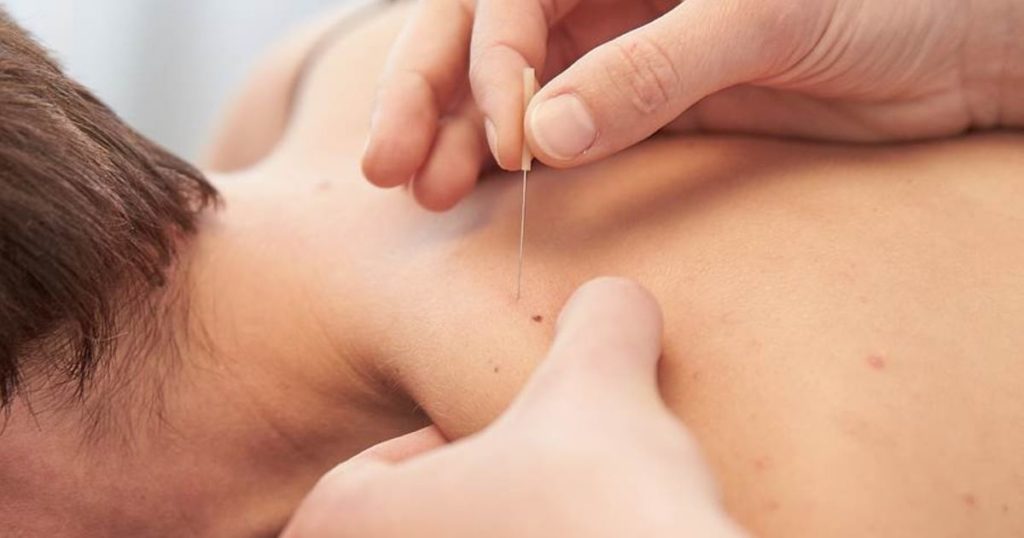What is a dry needle?
A “dry” needle is called such, because it doesn’t have a hole/tube inside it to carry e.g. Blood or any other fluid.
It’s just that. It’s a “Dry” (not wet) needle.
What is “dry needling”?
It’s when you use a dry needle, and insert it into a muscle for a desired clinical effect. But this effect can be varied based on the practitioners skill and the reason WHY they think you may benefit from it.
Does dry needling hurt?
When done accurately, it can be a little bit “achy” but (ironically) shouldn’t be too sharp. We often tell people that the area can feel “heavy” and most people who’ve never had it done before report the feeling as “weird”.
Very few people cannot “handle” dry needling
You mentioned the different types of dry needling?
Yes – there are a couple of ways of doing this technique.
- Static, and
- Dynamic
Static dry needling is when the practitioner uses a needle and leaves that needle in one place for up to several minutes. They may move it a few times in those few minutes.
Dynamic dry needling is when the practitioner moves the needle to get the best “twitch response” from the muscle.

What’s the point?
Clinicians will tell you that they are doing things like “releasing trigger points” or “tight muscles”.
Which may be true… however, in fact, all we’re REALLY doing is injuring you.
What do you mean?
Think about it. A needle is a foreign body. It comes from the outside of you, and under the skin.
Your immune system responds to any foreign body and mounts a minor immune response to help “fix” the injury – and in doing so, MAY help the area of muscle around it.
What things respond to dry needling?
Generally, muscle tension or when people refer to as “knots” will respond favourably, but not always.
Just because something is tight, it doesn’t mean that it has to be needled.
Generally speaking, an area of muscle tension is there for a reason.
The brain doesn’t increase muscle tension without a reason to do so!!
So – your practitioner should make sure that in releasing that tight muscle doesn’t have negative flow on effects… As can happen because they might be (inadvertently) releasing the master compensator.
Generally speaking – things that respond well to dry needling are back pain, neck pain, shoulder pain and sciatica.
Is it safe?
Yes. As long as your practitioner knows 3D anatomy, and knows what direction/depth they are inserting that needle.
With that said, certain areas of the body are a “no go” for needles!!
Our Osteopaths practice both static and dynamic dry needling to the highest hygiene and efficacy standards.
